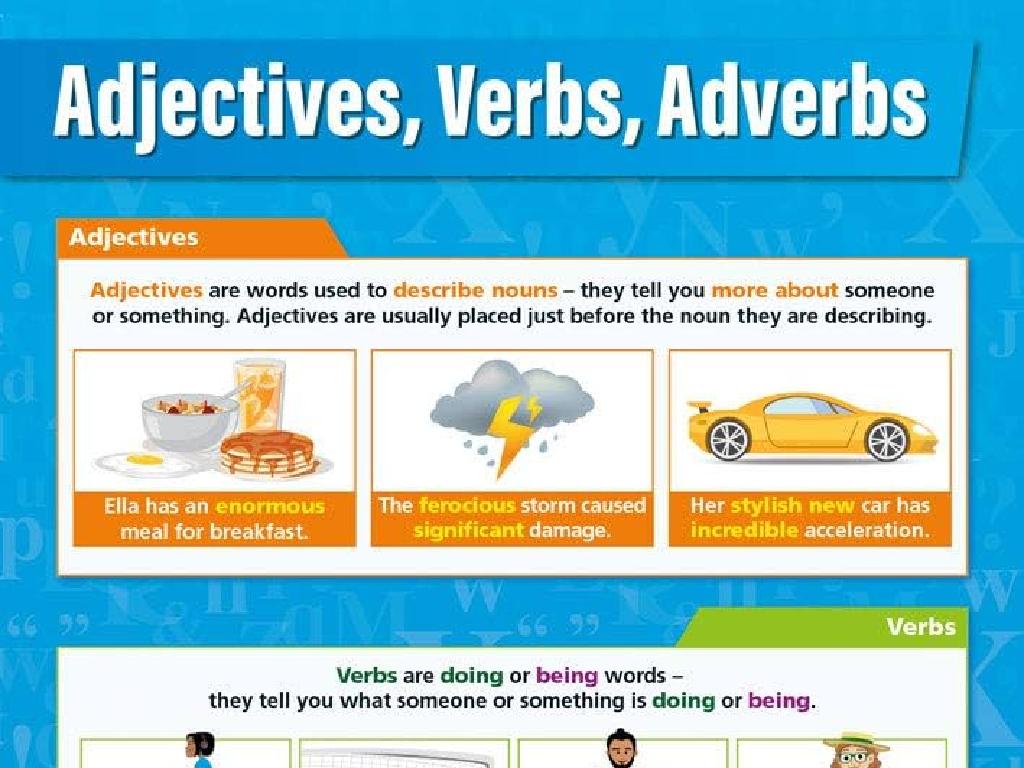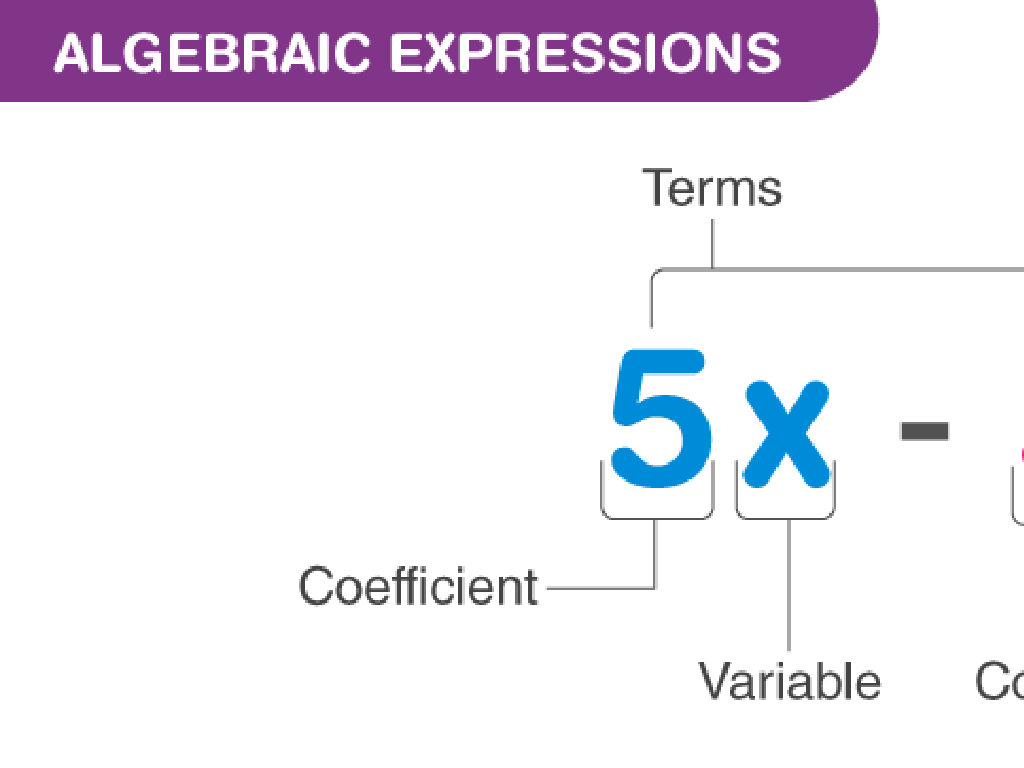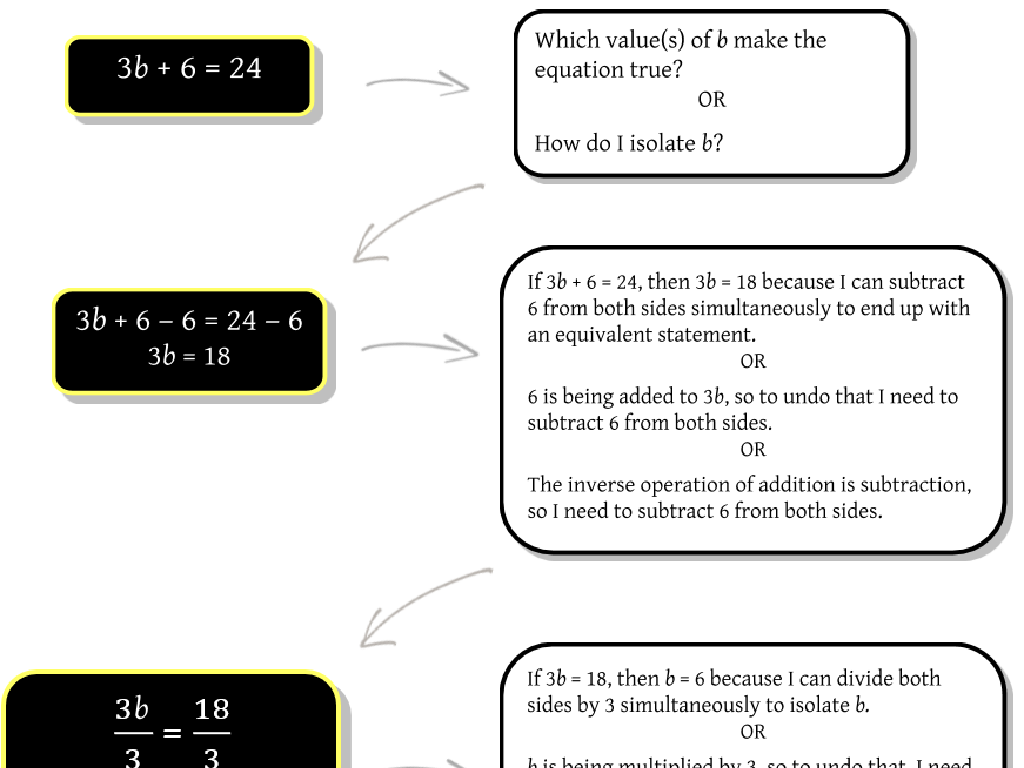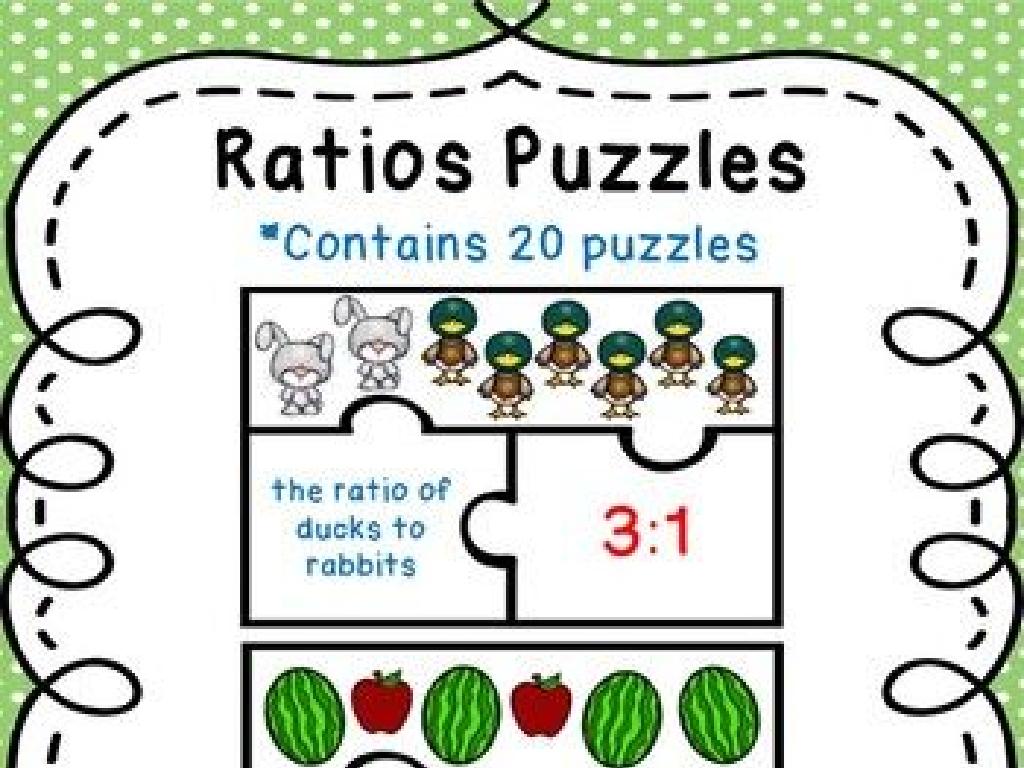Describing Motion
Subject: Science
Grade: High school
Topic: Physcis
Please LOG IN to download the presentation. Access is available to registered users only.
View More Content
Welcome to Physics: Describing Motion
– Exploring the concept of motion
– Motion is change in position over time.
– Physics: study of matter & energy
– Physics examines the natural world through matter interactions and energy transformations.
– Overview of motion description
– We’ll learn how to quantify and describe how objects move.
– Anticipate today’s learning journey
|
This slide is designed to introduce students to the fundamental concept of motion in physics. Begin by explaining motion as a basic part of our daily experiences, such as walking or driving. Clarify that physics is the science that seeks to understand how the universe behaves, focusing on matter and energy. Today’s lesson will delve into the specifics of describing motion, including speed, velocity, and acceleration. Encourage students to think about examples of motion they encounter in their lives to make the lesson relatable. The goal is to build a foundation that will be used to explore more complex topics in physics.
Exploring the Concept of Motion
– Define motion in physics
– Motion is the change in an object’s position over time.
– Everyday examples of motion
– Cars moving, birds flying, leaves falling
– Contrast motion with rest
– Motion is active movement, rest is the absence of motion
– Understanding relative motion
|
This slide introduces the fundamental concept of motion in physics. Begin by defining motion as the change in position of an object with respect to time and a reference point. Provide relatable examples such as vehicles on the road, animals in motion, or natural phenomena like rivers flowing. Highlight the difference between motion and rest by explaining that rest is the state of an object when it is not changing its position relative to its surroundings. Emphasize that motion is relative and can be observed differently depending on the observer’s frame of reference. Encourage students to think of scenarios where motion and rest can be confused due to relative perspectives.
The Role of Reference Points in Motion
– Importance of reference points
– Reference points help measure and describe motion accurately.
– Identifying reference points
– Common reference points: landmarks, stationary objects.
– Reference points in motion
– They allow us to determine the position and velocity of an object.
– Examples of reference points
– Classroom, trees outside, or a parked car can serve as reference points.
|
This slide aims to explain the concept of reference points and their critical role in describing motion. A reference point is a fixed place or object used for comparison to determine if something is in motion. It’s essential for students to understand that without a reference point, it is impossible to describe the motion of an object accurately. In physics, describing motion involves discussing the position, velocity, and acceleration of an object, all of which require a reference point. Encourage students to think of scenarios where identifying the right reference point is crucial, such as navigating using a map or playing sports. Provide examples and ask students to identify potential reference points in the classroom or around the school to solidify their understanding.
Exploring Types of Motion
– Linear motion characteristics
– Straight path movement, e.g., a car driving on a highway
– Rotational motion in action
– Circular movement, e.g., Earth rotating on its axis
– Periodic motion and examples
– Repeats at intervals, e.g., pendulum of a clock
– Comparing motion types
|
This slide aims to introduce students to the fundamental types of motion in physics. Linear motion is movement in a straight line, such as a train on tracks. Rotational motion involves an object rotating around an axis, like a merry-go-round. Periodic motion is characterized by repeated motion in a regular interval, such as the swinging of a pendulum. Understanding these concepts is crucial for students as they form the basis for more complex topics in physics. Encourage students to think of additional examples and to observe these motions in their daily lives to reinforce learning.
Measuring Motion: Speed, Velocity, and Acceleration
– Define speed, velocity, acceleration
– Speed is distance over time, velocity includes direction, and acceleration is change in velocity.
– Formulas for motion calculations
– Speed (s) = distance (d) / time (t), Velocity (v) = displacement / time, Acceleration (a) = change in velocity / time.
– Differentiating speed and velocity
– Speed is scalar, velocity is vector with magnitude and direction.
– Real-world application of concepts
|
This slide introduces the fundamental concepts of motion in physics: speed, velocity, and acceleration. Begin by defining each term, ensuring students understand that speed is a scalar quantity representing how fast an object is moving, while velocity is a vector, indicating both the speed and direction of the object’s movement. Acceleration is the rate at which an object changes its velocity. Provide the formulas for each concept and work through examples to illustrate how they are used in calculations. Emphasize the difference between speed and velocity, highlighting that velocity includes a directional component. Use real-world examples, such as cars traveling on a highway versus a race track, to help students grasp the application of these concepts.
Graphing Motion: Understanding Graphs and Slopes
– Interpreting distance-time graphs
– Shows how far an object has moved over time
– Analyzing velocity-time graphs
– Shows an object’s speed at different times
– Understanding graph slopes
– Slope indicates speed: steep = fast, gentle = slow
– Activity: Create your motion graphs
|
This slide introduces students to the concepts of graphing motion through distance-time and velocity-time graphs. The slope of a distance-time graph indicates the speed of an object; the steeper the slope, the faster the object is moving. A velocity-time graph, on the other hand, shows how an object’s velocity changes over time. For the class activity, provide students with sample scenarios to graph, such as a car accelerating or a person walking at a constant speed. Encourage them to think about how the slope of the line relates to the motion of the object. Offer clear instructions on how to plot points and draw lines to represent motion accurately. This hands-on activity will help solidify their understanding of the concepts.
Forces and Motion: Newton’s Laws
– Forces impact on motion
– A force can change an object’s speed or direction
– Overview of Newton’s Laws
– Newton’s three laws define the relationship between a body and the forces acting upon it
– Daily life motion examples
– Examples: kicking a ball, car braking, amusement park rides
– Analyzing force interactions
|
This slide introduces the concept of how forces affect motion, setting the stage for a deeper dive into Newton’s Laws of Motion. Begin by explaining that forces are pushes or pulls that can cause an object to speed up, slow down, or change direction. Then, provide a brief overview of Newton’s three laws: 1) An object at rest stays at rest, and an object in motion stays in motion unless acted upon by a force. 2) Force equals mass times acceleration (F=ma). 3) For every action, there’s an equal and opposite reaction. Use everyday examples to illustrate these laws, such as kicking a ball (force applied to change motion), a car braking (force causing deceleration), and the forces experienced on amusement park rides. Encourage students to think of other examples where they can see these laws in action. This will help them understand the practical applications of these fundamental physics concepts.
Class Activity: Motion in Action
– Measure speed of objects
– Work in groups for measurements
– Create motion graphs
– Use distance-time graphs to represent speed
– Present findings to class
|
This class activity is designed to provide hands-on experience with the concept of motion. Students will be divided into groups and tasked with measuring the speed of various objects, such as toy cars, balls, or even classmates in a race. They will use stopwatches and meter sticks to collect data on distance and time. Afterward, each group will create a graph to visually represent the motion of their object, plotting distance against time to show speed. Finally, groups will present their findings to the class, explaining their measurement process and what their graph shows about the object’s motion. For the teacher: Prepare a variety of objects for measurement, ensure there are enough tools for all groups, and provide graph paper or digital tools for creating graphs. Possible activities include timing sprints, rolling balls down inclines, or using remote-controlled cars.





